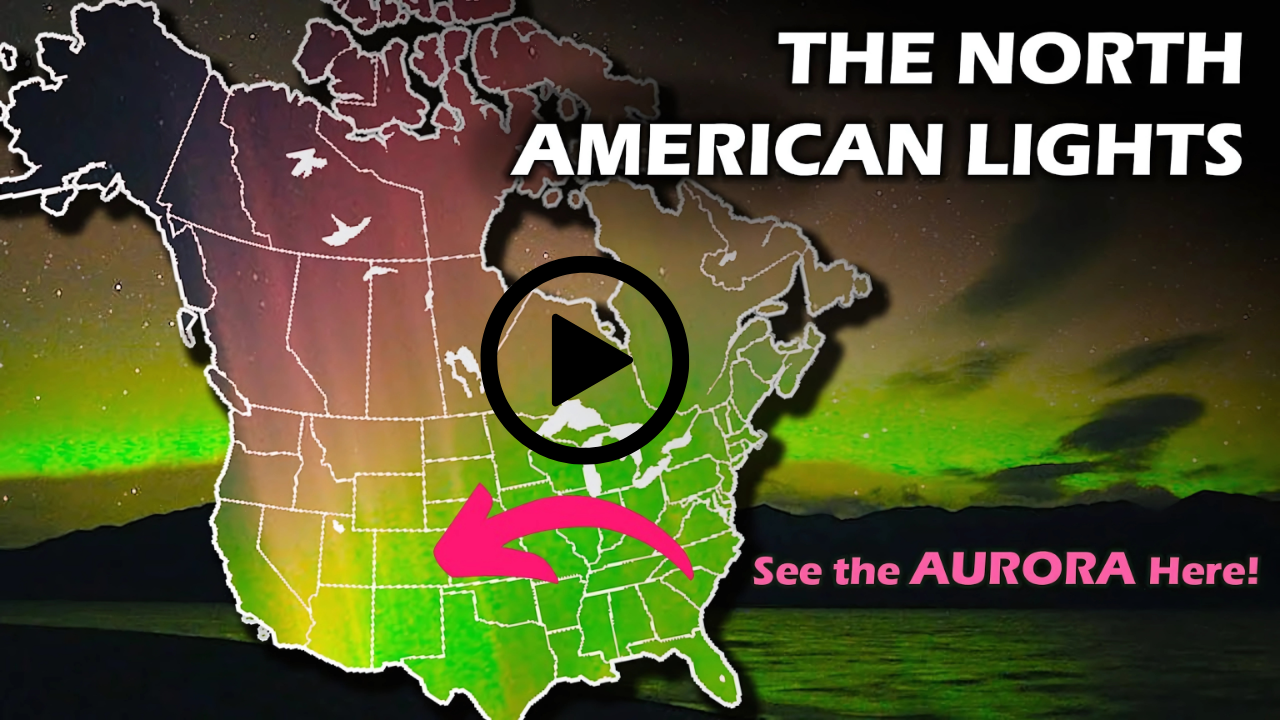Picture this: you’re standing outside on a crisp evening, coffee in hand, when suddenly the sky erupts in dancing curtains of emerald and magenta light. That magical scenario could become reality tonight as Earth experiences one of the most spectacular aurora displays in recent memory. Thanks to a powerful solar storm that slammed into our planet’s magnetic field in the early morning hours of June 1st, millions of Americans might witness the ethereal beauty of the northern lights from their own backyards.
The Science Behind Tonight’s Celestial Spectacle
When Space Weather Goes Wild
What we’re experiencing isn’t just pretty lights – it’s the dramatic result of our sun having a cosmic temper tantrum. A coronal mass ejection, essentially a massive blob of charged particles hurled from the sun’s surface, recently collided with Earth’s protective magnetic bubble. Think of it like cosmic billiards, where our planet just got hit by a really fast cue ball.
This collision has sent our magnetosphere into overdrive, creating the perfect conditions for auroras to stretch much farther south than usual. Space weather forecasters from the U.K. Met Office are predicting storm levels ranging from G1 to potentially G4 – that’s like going from a gentle breeze to a hurricane in aurora terms.
Decoding the Kp Index Mystery
Scientists use something called the Kp index to measure how intense these geomagnetic storms get. Tonight’s forecast shows this index potentially hitting 7.67 over the next 24 hours. To put that in perspective, anything above 5 starts getting really exciting for aurora hunters. It’s like having a volume dial for the Earth’s magnetic activity, and tonight someone’s cranked it up to eleven.
Your State-by-State Aurora Viewing Guide
Prime Time Viewing Locations
If you live in any of these 23 states, tonight might be your lucky night. I’ve arranged them roughly by their chances of seeing the show, starting with the absolute best bets:
The Aurora Goldmine States: Alaska takes the crown here – they’re practically guaranteed a show. Montana, North Dakota, Minnesota, and Wisconsin follow closely behind. These northern tier states are like having front-row seats at nature’s theater.
Strong Contenders: Michigan, South Dakota, Vermont, New Hampshire, and Maine have excellent prospects. Idaho, Washington, and Oregon on the West Coast could see some spectacular displays, especially in their northern regions.
The Surprise Possibilities: Here’s where it gets really interesting – New York, Massachusetts, Connecticut, and Rhode Island might actually glimpse auroras tonight. That’s pretty remarkable for states that far south. Nebraska, Iowa, Wyoming, Illinois, Indiana, and Pennsylvania round out our list of hopeful viewing areas.
The Geography of Light Pollution
Living in one of these states doesn’t automatically guarantee you’ll see anything, though. City dwellers face their biggest enemy: light pollution. Those bright street lights and neon signs that make urban life convenient also wash out the subtle glow of distant auroras.
Your best bet? Drive away from the city until you can actually see the Milky Way clearly. Rural areas, state parks, or even just getting to the edge of suburban sprawl can make the difference between seeing nothing and witnessing something magical.
Timing Is Everything: When to Look Up
The Early Bird Gets the Aurora
Here’s something most people don’t realize – the best aurora viewing often happens in the wee hours of the morning, particularly around 1-2 AM. I know, I know, that’s not exactly prime time for most of us. But there’s a good reason for this timing.
As we approach the summer solstice on June 20th, our nights are getting shorter. The window of true darkness – that sweet spot when auroras become visible against the sky – is shrinking fast. By the time you read this, we’re dealing with maybe 4-5 hours of decent viewing darkness in most northern states.
The Direction Game
Always face north when aurora hunting. This might seem obvious, but you’d be surprised how many people scan the entire sky and miss the show happening right in front of them. Find the North Star (Polaris) if you can, or use a compass app on your phone. The auroras will dance along the northern horizon, sometimes reaching high overhead if the storm is particularly strong.
Photography Tips for Capturing the Magic
Smartphone vs. Professional Camera
Modern smartphones have gotten surprisingly good at night photography, especially newer models with dedicated night modes. However, they still struggle with the subtle colors and movement of auroras. If you have a DSLR or mirrorless camera, tonight’s the night to dust it off.
Camera Settings That Actually Work:
- ISO: Start around 1600-3200, adjust based on your camera’s noise performance
- Aperture: Wide open (f/1.4-f/2.8) to gather maximum light
- Shutter Speed: 10-20 seconds for static shots, shorter if the aurora is moving quickly
- Focus: Manual focus set to infinity
The Tripod Factor
Any exposure longer than a couple seconds absolutely requires a tripod. There’s no getting around this. Even the steadiest hands can’t hold still for 15 seconds, and camera shake will turn your beautiful aurora into a blurry green smudge.
Apps and Tools for Aurora Hunters
Technology Meets Nature
Several smartphone apps can help you track aurora activity in real-time. “My Aurora Forecast & Alerts” provides location-based predictions and push notifications when conditions improve. “Space Weather Live” offers deeper insights into the magnetic field data that drives these displays.
These apps aren’t perfect – nature has a way of surprising us – but they’ll give you a much better idea of when to bundle up and head outside.
What to Expect (And What Not to Expect)
Managing Your Expectations
Here’s the truth about aurora viewing that many articles don’t mention: what you see with your naked eye might not match those incredible photos on social media. Auroras often appear as faint green or white curtains to the human eye, with colors becoming more vivid in long-exposure photographs.
That doesn’t make them any less magical, though. There’s something deeply moving about watching these cosmic light shows dance across the sky, knowing you’re witnessing the direct interaction between our planet and the sun.
The Unpredictability Factor
Auroras are notoriously fickle. Sometimes they appear much farther south than predicted, catching viewers by surprise. Other times, despite perfect conditions on paper, they barely show up at all. Solar wind speed, magnetic field orientation, and a dozen other factors all play roles in determining what actually happens.
The Bigger Picture: Solar Cycle Considerations
Why Now?
We’re currently in Solar Cycle 25, and solar activity has been ramping up significantly. This means more frequent and intense aurora displays over the next few years. Tonight’s show might be spectacular, but it’s likely not the last chance you’ll have to see northern lights from unusual southern locations.
Solar maximum – the peak of solar activity – is expected around 2024-2025, making this an excellent time to become an aurora enthusiast.
Frequently Asked Questions
Q: Do I need special equipment to see the northern lights?
A: No, auroras are visible to the naked eye under dark skies, though binoculars can enhance the experience.
Q: How long do aurora displays typically last?
A: Anywhere from a few minutes to several hours, depending on solar wind conditions and storm intensity.
Q: Can auroras be harmful to humans?
A: Not directly, though the same solar activity can disrupt GPS, power grids, and satellite communications.
Embracing the Cosmic Connection
Standing under an aurora display connects us to something much larger than our daily concerns. These lights represent a direct, visible link between Earth and the sun – a reminder that we’re all passengers on a small planet hurtling through space, protected by an invisible magnetic shield that occasionally becomes beautifully visible.
Whether you see tonight’s aurora or not, the attempt itself is worthwhile. Getting away from artificial lights, looking up at the night sky, and taking time to appreciate the cosmos has its own rewards. And who knows? You might just witness one of nature’s most incredible performances.
So grab a warm jacket, maybe some hot coffee, and head outside tonight. Even if the auroras don’t cooperate, you’ll have spent time under the stars – and that’s never wasted time. The universe has a way of rewarding those patient enough to look up and wonder.

